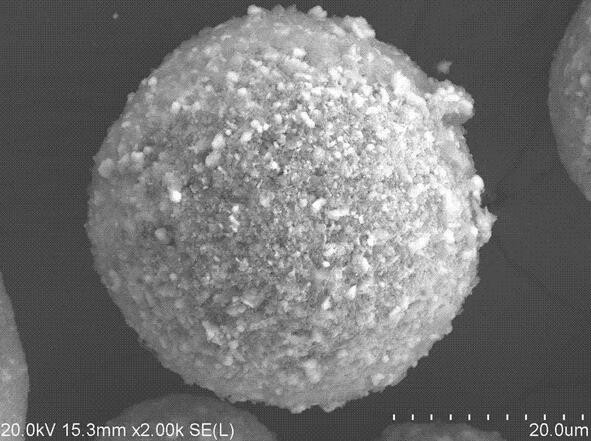14 methods of surface coating treatment of ultrafine powder

Ultrafine powder usually refers to particles with a particle size of micron or nanometer. Compared with bulk conventional materials, it has larger specific surface area, surface activity and higher surface energy, so it exhibits excellent optical, thermal, electrical, magnetic, catalytic and other properties. As a functional material, ultrafine powder has been extensively studied in recent years, and has been more and more widely used in various fields of national economic development.
1. Mechanical mixing method. Using extrusion, impact, shearing, friction and other mechanical forces, the modifier is evenly distributed on the outer surface of the powder particles, so that various components can penetrate and diffuse each other to form a coating.
2. Solid phase reaction method. Fully mix and grind several metal salts or metal oxides according to the formula, then calcinate, and directly obtain superfine coating powder through solid-state reaction.
3. Hydrothermal method. In a closed system of high temperature and high pressure, water is used as a medium to obtain a special physical and chemical environment that cannot be obtained under normal pressure conditions, so that the reaction precursor is fully dissolved and reaches a certain degree of supersaturation, thereby forming growth elements, and then Nucleation and crystallization make composite powder.
4. Sol-gel method. First, the modifier precursor is dissolved in water (or organic solvent) to form a uniform solution, and the solute and the solvent undergo hydrolysis or alcoholysis to obtain the modifier (or its precursor) sol; then the pretreated coated particles Uniformly mixed with the sol, so that the particles are uniformly dispersed in the sol, the sol is transformed into a gel after treatment, and calcined at a high temperature to obtain a powder coated with a modifier on the outer surface, thereby realizing the surface modification of the powder.
5. Precipitation method. Add a precipitant to the solution containing powder particles, or add a substance that can trigger the formation of a precipitant in the reaction system, so that the modified ions undergo a precipitation reaction and precipitate on the surface of the particles, thereby coating the particles.
6. Heterogeneous coagulation method (also known as “miscellaneous flocculation method”). A method based on the principle that particles with opposite charges on the surface can attract each other and agglomerate. If the diameter of one type of particle is much smaller than the diameter of another charged particle, then during the agglomeration process, the small particle will adsorb on the outer surface of the large particle to form a coating.
7. Microemulsion coating method. First, the micro-water core provided by W/O (water-in-oil) microemulsion is used to prepare the ultrafine powder to be coated, and then the powder is coated and modified by microemulsion polymerization.
8. Non-uniform nucleation method. According to the LAMER crystallization process theory, the coating layer is formed by using the heterogeneous nucleation and growth of modifier particles on the coated particle matrix.
9. Electroless plating method. It refers to the process of metal precipitation by chemical method without external current, including displacement method, contact plating method and reduction method.
10. Supercritical fluid method. It is a new technology still under study. In supercritical conditions, reducing the pressure can lead to supersaturation, and high supersaturation rates can be achieved, allowing solid solutes to crystallize out of supercritical solutions.
11. Chemical vapor deposition method. At a relatively high temperature, the mixed gas interacts with the surface of the substrate, decomposing some components in the mixed gas, and forming a metal or compound coating on the substrate.
12. High energy method. The method of coating nanoparticles by using infrared rays, ultraviolet rays, γ-rays, corona discharge, plasma, etc., is collectively referred to as high-energy methods. The high-energy method usually uses some substances with active functional groups to achieve coating on the surface of nanoparticles under the action of high-energy particles.
13. Spray pyrolysis method. The process principle is to spray the mixed solution of several salts containing the required positive ions into mist, and send it into the reaction chamber heated to the set temperature, and generate fine composite powder particles through the reaction.
